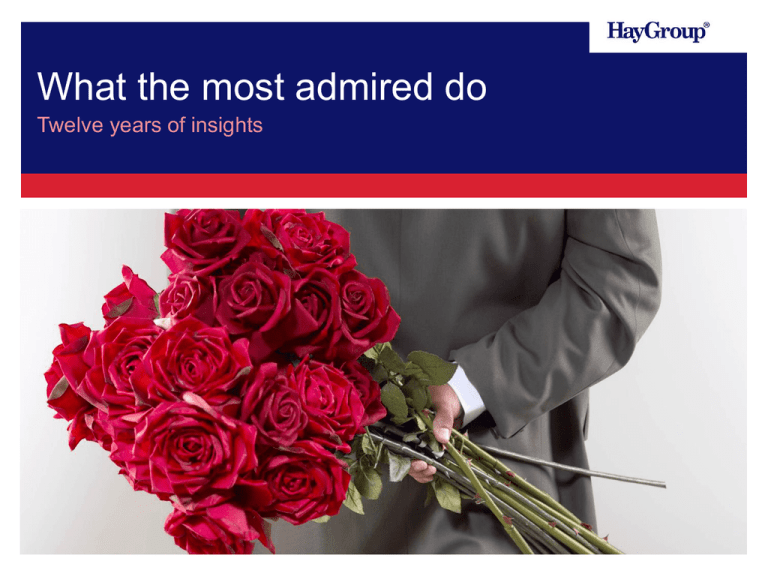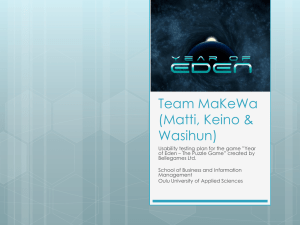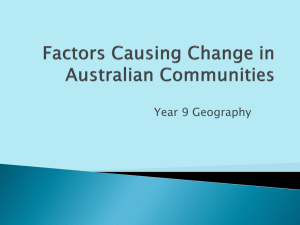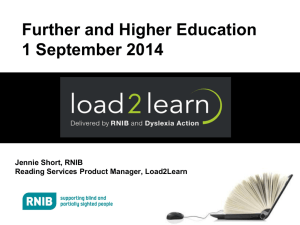
What the most admired do
Twelve years of insights
What the most admired do
WHAT THE MOST ADMIRED DO — TWELVE YEARS OF INSIGHTS
Hay Group has partnered with Fortune magazine for over ten years to
identify and rank The World’s Most Admired Companies (WMAC)
The study not only identifies the companies that are the most admired in their industries,
but also uncovers the reasons for their strong reputations
Candidate companies include: Fortune 1,000 companies; non-US companies in
Fortune's Global 500 database with revenues of $10 billion or more; and the top non-US
international companies operating in the US
Companies are rated both overall and relative to their industry peers by over 10,000 top
executives, directors and analysts
Industry rankings are generated for 64 industries (25 international industries and 39
primarily US-market industries)
© 2009 Hay Group. All rights reserved
2
What the most admired do
WHAT THE MOST ADMIRED DO — TWELVE YEARS OF INSIGHTS
WMACs do not follow any particular blueprint, so their success cannot be
bought ‘off the shelf’
What they do have in common is alignment of:
corporate culture
attitude of managers
strategy
global coordination
Those that get it right tend to enjoy success over the long-term
They stay at the top because they are constantly building, refining and developing the
operating themes through which the company has won its success
Their competitive advantage becomes built into the very fabric of the organization
© 2009 Hay Group. All rights reserved
3
Outperforming the market
WHAT THE MOST ADMIRED DO — TWELVE YEARS OF INSIGHTS
The WMACs study is the only one to shine a light on these companies and
give real insights into why they’re so successful, enduring, well-led and
packed with talent. This is important because WMACs outperform industry
peers and the market as a whole
Total shareholder returns for the top ten WMACs over the last three years are nearly
three times the returns for the Standard and Poor’s 500
18.5%
-7.1%
WMAC
Standard and Poor’s 500
© 2009 Hay Group. All rights reserved
4
Consistent highest scorers
include industry giants like
GE, Coca-Cola, Microsoft,
Berkshire Hathaway, Toyota
Motor, Johnson & Johnson
and Citigroup
© 2009 Hay Group. All rights reserved
5
01
People
Success through people
WHAT THE MOST ADMIRED DO — TWELVE YEARS OF INSIGHTS
WMACs focus on achieving success through people
This focus on people means:
they are more likely than their peers to have strategies and metrics related to the
management of human capital. WMACs are 19 per cent more likely to provide
expertise to the CEO and management on human capital issues
over 80 per cent of WMACs have a human capital strategy that has been reviewed
and approved by the board, compared to just under 70 per cent of their peers
their leaders take a ‘hands on’ approach to developing talent. Leaders devote as
much as 30 per cent of their time to coaching staff
the boards of the WMACs are strongly oriented towards taking care of human capital.
WMACs are 22 per cent more likely to have a human capital strategy that has been
reviewed and approved by the board
© 2009 Hay Group. All rights reserved
7
Success through people
WHAT THE MOST ADMIRED DO — TWELVE YEARS OF INSIGHTS
WMACs focus on achieving success through people
This focus on people means:
they have better plans for
CEO and executive
succession. Over 90 per
cent of WMACs have well
defined plans compared to
65 per cent of peer-group
companies
as a result they are more
likely to hire a new CEO
from inside the
organization – 77 per cent
compared to 60 per cent of
peer group companies
© 2009 Hay Group. All rights reserved
Peer group
WMAC
Well defined plans for
CEO and executive
succession
More likely to hire a
new CEO from inside
the organization
0
20
40
60
80
100
8
“My main job was developing
talent. I was a gardener providing
water and other nourishment to
our top 750 people. Of course, I
had to pull out some weeds, too.”
Jack Welch, former CEO of GE,
the highest-scoring World’s Most Admired Company
© 2009 Hay Group. All rights reserved
9
Succession planning
WHAT THE MOST ADMIRED DO — TWELVE YEARS OF INSIGHTS
The Most Admired Companies are prepared for the unexpected loss of
the CEO or other top executives
Peer group
Most Admired
We have developed a comprehensive profile
for the CEO’s successor that reflects our
strategy and business model
In terms of a CEO successor, our board has
a preference for an internal candidate
Our board receives regular updates on
development of the internal candidates for top
leadership positions
0
© 2009 Hay Group. All rights reserved
10
20
30
40
50
60
70
80
90
100
10
Profound employee engagement
WHAT THE MOST ADMIRED DO — TWELVE YEARS OF INSIGHTS
The Most Admired Companies are more successful at maintaining high
levels of loyalty and motivation during times of economic uncertainty
They achieve this is by:
ensuring opportunities for
personal advancement and
growth are consistently
available. Just over 60 per
cent of WMACs say
planned career
assignments are used a
great deal compared to 35
per cent of their peers,
while 57 per cent say oneto-one coaching is greatly
used compared to 22 per
cent of their peer group
© 2009 Hay Group. All rights reserved
Peer group
WMAC
Planned career
assignments are used
a great deal
One-to-one coaching
is used a great deal
0
10
20
30
40
50
60
70
11
Profound employee engagement
WHAT THE MOST ADMIRED DO — TWELVE YEARS OF INSIGHTS
The Most Admired Companies are more successful at maintaining high
levels of loyalty and motivation during times of economic uncertainty
They achieve this is by:
placing a strong emphasis on reward strategy – 82p per cent of WMACs say they
regularly reinforce their reward philosophy in communications with employees,
compared to 64 per cent of their peers
making sure they get performance management right
focusing on employee development. The boards of WMACs are 15 per cent more
likely to receive regular updates on the development of internal candidates for top
leadership positions
creating a culture that motivates and supports employees.
© 2009 Hay Group. All rights reserved
12
02
Strategy
Strategy that gets executed
WHAT THE MOST ADMIRED DO — TWELVE YEARS OF INSIGHTS
WMACs are much more successful than their peers at making their
strategies happen
This has a lot to do with clarity,
as our research shows:
strategic objectives are
clearer at all levels of the
company. For example, 92
per cent of WMACs say that
the business strategy is well
communicated to
management in the company,
compared to 72 per cent of
their peers. Furthermore 67
per cent believe it is well
communicated to employees,
as opposed to 50 per cent of
their peers
© 2009 Hay Group. All rights reserved
Peer group
WMAC
Business strategy is
well communicated to
management
Business strategy is
well communicated to
employees
0
10
20
30
40
50
60
70
80
90
14
Strategy that gets executed
WHAT THE MOST ADMIRED DO — TWELVE YEARS OF INSIGHTS
WMACs are much more successful than their peers at making their
strategies happen
This has a lot to do with clarity, as our research shows:
performance measures are more closely aligned with strategy
executives are held more accountable for carrying out strategic plans. Just under 80
per cent of WMACs say managers understand their roles in implementing strategy
compared to 58 per cent in the peer group
they are less tolerant of ‘off strategy’ behavior to meet financial targets. Only 22 per
cent of WMACs say that this type of behavior was tolerated to some or great extent
in order to meet the numbers, compared to 52 per cent of their peers
they are more likely to take action if executives do not actively support strategy
© 2009 Hay Group. All rights reserved
15
Globalization: WMACs balance global
and local approaches
WHAT THE MOST ADMIRED DO — TWELVE YEARS OF INSIGHTS
WMACs show more skill than their peers when it comes to leveraging
global scale and local presence
Here are the reasons why:
good global integration of their operations help them exploit opportunities of scale
local business units are given the flexibility to respond to local market needs. Some
84 per cent of WMACs say they can respond flexibly to local situations, compared
with 73 per cent of other companies
knowledge management is used effectively on both a local and global basis. As a
result WMACs are good at identify new business practices and leverage them across
other business units. Some 78 per cent say they can do this effectively, compared
with only 53 per cent in other companies
good international coordination means even far-flung business units are united
around a common strategic vision
they ensure local managers are prepared to sacrifice local priorities to benefit the
global enterprise
compensation strategies are generally centralized, enabling a global approach to
talent management
© 2009 Hay Group. All rights reserved
16
Charting a course for success
WHAT THE MOST ADMIRED DO — TWELVE YEARS OF INSIGHTS
What makes WMACs special is the distinctive way that they manage their
organizations
They build strategies that work through good times and bad, helping them avoid the
distractions that trap their peers when business cycles turn. For example, Southwest
Airlines has not altered its strategy for almost 40 years!
There is no single best organizational structure for WMACs, but their structure is always
aligned to the strategy and to the business model
They have more focus on the operating model than their peers. They build in flexibility
and ensure the model is made visible across the organization
They are better at equipping leaders. They identify, develop and reward leaders who are
successful at working across the organization. As a result, 83 per cent of WMAC
executives feel that they manage the matrix organization effectively, compared to only
58 per cent of the peer group
© 2009 Hay Group. All rights reserved
17
Toyota takes its competitors on
plant tours, confident that no
one is going to be able to
reproduce excellence that has
been painstakingly built over
many years
© 2009 Hay Group. All rights reserved
18
03
Culture
Strong organizational culture
WHAT THE MOST ADMIRED DO — TWELVE YEARS OF INSIGHTS
Organizational cultures are important drivers of employee behavior and
WMACs display a different cultural profile to their peers
Their leaders tend to have a consistent, shared understanding both of what the
company’s culture is at present and where it should go in the future
Their cultures promote both individual initiative and high levels of teamwork
This combination of individual initiative and teamwork is used to drive innovation and
employee loyalty
For the WMACs, it is crucial that employees mesh with their culture.
© 2009 Hay Group. All rights reserved
20
Vision and culture
WHAT THE MOST ADMIRED DO — TWELVE YEARS OF INSIGHTS
For global leaders, vision and culture are key to integration of
operations
Peer group
Most Admired
We have succeeded in aligning our various
business units/subsidiaries around a
common strategic vision
We have succeeded in aligning our various
business units/subsidiaries around a common
corporate culture
We are effective in communicating changes in
/strategic direction and corporate policies
procedures to business unit/subsidiary managers
0
© 2009 Hay Group. All rights reserved
10
20
30
40
50
60
70
80
90
100
21
Long-term focus
WHAT THE MOST ADMIRED DO — TWELVE YEARS OF INSIGHTS
WMACs are more focused on the future than their peers
Our research highlights a number of ways in which this manifests itself in their behavior:
their performance measures are structured to focus on the long term. For example,
WMACs are 56 per cent more likely to have performance measures based on
building customer loyalty
compromising long-term objectives for the sake of short-term demands is frowned
upon
they take a long-term approach to talent management. For example, the boards of
WMACs are 23 per cent more likely to evaluate CEOs on success in developing
human capital, in addition to evaluating financial outcomes and strategy
implementation
even in stormy economic conditions they continue to hold to their long-term
objectives
© 2009 Hay Group. All rights reserved
22
Managed innovation
WHAT THE MOST ADMIRED DO — TWELVE YEARS OF INSIGHTS
WMACs excel at innovation because they actively manage it to ensure that
the best ideas make it to market
At WMACs, innovation starts at the top because their leaders:
direct innovation and establish a culture in which it can flourish. For example, they
are more patient with promising ideas that fail to generate immediate returns
promote high levels of initiative. The organizational culture in WMACs supports
empowerment and risk taking and their performance management systems are
designed to reward innovative activity
encourage cross-functional teamwork that ensures best practices are used across
the organization. For example, 30 per cent of WMACs say they are very effective at
exchanging leadership practices between business units, compared to 23 per cent of
their peers
WMACs also continually look to reinvent themselves and thus frequently address
potential problems before they occur
Rather than exploring completely new areas, they often innovate in areas where they’re
already strong
© 2009 Hay Group. All rights reserved
23
Innovation through empowerment
WHAT THE MOST ADMIRED DO — TWELVE YEARS OF INSIGHTS
Innovation: empowerment promotes innovative behavior
Peer group
Most Admired
Decisions are generally made at the right level
ie where the most appropriate knowledge(
)and expertise resides
Managers are given the decision-making authority
necessary to carry out their responsibilities
Staffing levels are adequate to ensure that
managers and employees have sufficient
time to pursue and develop innovative ideas
0
© 2009 Hay Group. All rights reserved
10
20
30
40
50
60
70
80
90
100
24
04
Reward
Unlocking reward effectiveness
WHAT THE MOST ADMIRED DO — TWELVE YEARS OF INSIGHTS
Our research shows WMACs achieve a better return on their reward program
investments than their peers and as a result actually end up paying about
five per cent less for talent
They get more mileage out of their reward programs, because they:
ensure reward strategies are clearly aligned with organization goals, strategy and
culture
tend to take a more centralized approach to reward strategy
have stronger talent development programs and processes that encourage the internal
sourcing of candidates. This is one reason why they pay about five per cent less in
base pay for management and professional positions
focus on executional excellence in reward programs, not sophisticated design
© 2009 Hay Group. All rights reserved
26
Unlocking reward effectiveness
WHAT THE MOST ADMIRED DO — TWELVE YEARS OF INSIGHTS
Our research shows WMACs achieve a better return on their reward program
investments than their peers and as a result actually end up paying about
five per cent less for talent
They get more mileage out of their reward programs, because they:
promote a ‘total rewards’ view across the organization and leverage an array of
intangible rewards. As a result:
74 per cent of WMACs state that their employees understand and appreciate that
rewards consist of both tangible and intangible components, compared with 61
per cent of their peers
engage line managers in the rollout of reward programs and do a better job of
communicating reward strategies.
For example, 82 per cent of WMACs regularly reinforce their reward philosophy in
communications with employees, while only 64 per cent of peer companies do
the same
© 2009 Hay Group. All rights reserved
27









